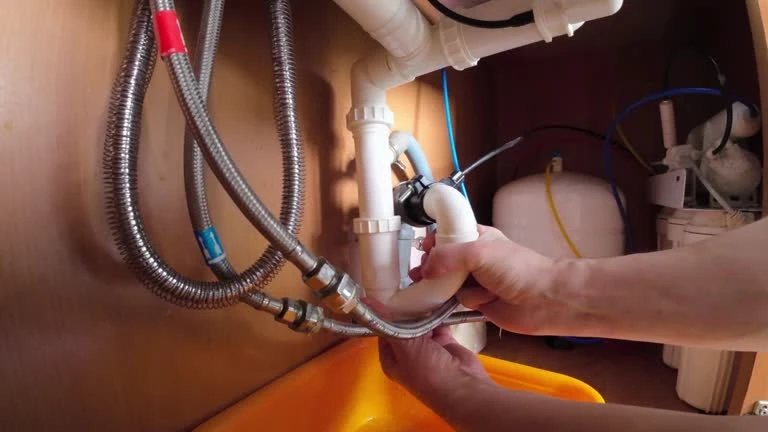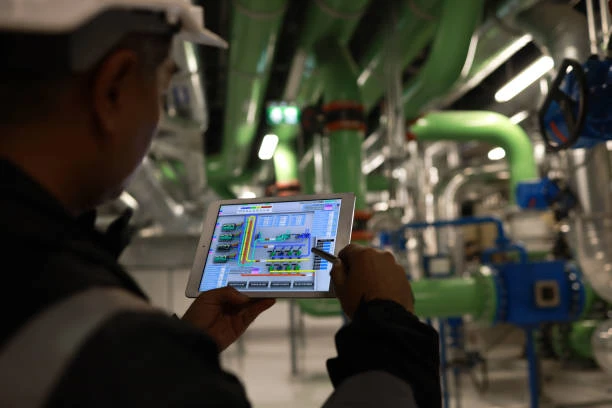Optimizing industrial system layouts proves essential for enhancing efficiency and performance. Properly planned layouts streamline operations and reduce costs. Gas fittings play a crucial role in this optimization by ensuring safe and efficient gas distribution. Understanding how to effectively incorporate gas fittings into system layouts is vital for success. This article explores various strategies and considerations for optimizing industrial layouts with gas fittings.
Importance of Layout Planning
Effective layout planning significantly impacts operational efficiency and safety. It involves strategically positioning equipment and components for optimal workflow. Gas fittings, as integral parts of the system, require careful consideration in the planning phase. For example, a well-designed layout minimizes the length of gas pipelines, reducing pressure drops and energy consumption. Planning ensures that all components work harmoniously, enhancing overall system performance.
Integration of Gas Fittings
Integrating gas fittings into industrial layouts demands meticulous attention to detail. Proper integration ensures seamless gas flow and minimizes potential hazards. For instance, using flexible gas fittings accommodates system expansion and contraction, maintaining safety and reliability. Additionally, strategically placing shut-off valves enhances accessibility and control. Thoughtful integration of gas fittings supports efficient system operation and maintenance.
Safety Considerations in Layout Design
Safety remains paramount in industrial system layouts. Gas fittings must adhere to strict safety standards to prevent leaks and accidents. Incorporating safety features such as pressure relief valves enhances system security. For example, designing layouts with easy access to emergency shut-off valves reduces response time in emergencies. Prioritizing safety in layout design protects both personnel and equipment.
Enhancing System Efficiency
Optimized layouts improve system efficiency by reducing energy consumption and operational costs. Gas fittings contribute to this optimization by ensuring efficient gas distribution. For instance, using high-quality fittings reduces frictional losses and maintains consistent pressure levels. Streamlined layouts minimize unnecessary bends and connections, further enhancing efficiency. Focusing on efficiency in layout design supports sustainable operations.
Technological Advancements in Gas Fittings
Technological advancements in gas fittings offer new opportunities for optimizing system layouts. Innovations such as smart fittings provide real-time data on system performance. For example, sensors embedded in gas fittings monitor pressure and flow, enabling proactive maintenance. Leveraging technology enhances system reliability and efficiency. Staying updated with these advancements ensures competitive advantage in industrial operations.
Cost Implications and Benefits
Optimizing industrial layouts with gas fittings has significant cost implications. Proper planning and integration reduce installation and maintenance expenses. For instance, minimizing pipeline lengths lowers material and labor costs. Additionally, efficient systems consume less energy, reducing operational expenses. Understanding these cost benefits helps companies allocate resources effectively, maximizing return on investment.
Environmental Impact and Sustainability
Sustainable practices are increasingly important in industrial operations. Optimized layouts with efficient gas fittings reduce environmental impact. For example, minimizing gas leaks decreases greenhouse gas emissions. Additionally, efficient systems consume less fuel, conserving natural resources. Incorporating sustainability into layout design aligns with global environmental goals and enhances corporate responsibility.
Future Trends in Industrial Layouts
The future of industrial layouts promises further optimization through technological innovation. Emerging trends such as automation and digitalization offer new possibilities. For instance, digital twins allow virtual testing of layouts before implementation, reducing errors and costs. Embracing these trends ensures continuous improvement and competitiveness. Staying informed on future developments supports strategic planning and long-term success.
IFAN Products international standards
IFAN products strictly adhere to a comprehensive range of international standards, encompassing ISO 15874, EN 15874, ASTM F2389, DIN 8077/8078, GB/T 18742, NBR 15884, ISO 15494, EN ISO 15494, GB/T 19472, NBR 15494, ASTM 2846 (501), DIN 8079/8080 (502), ASTM F441/F441M SCH80 (503), DIN (504), DIN (505), GB/T 18993, AS/NZS 1477, CSA B137.6, NSF/ANSI 14, TIS 17-2532/1131-2535, BS 3505, BS 4346 (801), ASTM D1785 SCH40 (802), ASTM D1785 SCH80 (803), DIN (804), GB (805), GB (806), GB(901), DWV(902), ASTM D2665 (903), along with ASTM D2241, D2665, D2729, and F441/F441M series, ISO 1452, EN ISO 1452, DIN 8061/8062, GB/T 10002, AS/NZS 1477, JIS K6741, CSA B137.3, and other national and industry norms.
Connect
IFAN is a Chinese manufacturer of plastic pipes, fittings and valves with 30 years of experience. If you are interest in IFAN copper fittings, copper valves, plastic pipes and fittings, please contact us. IFAN offers you a variety of standard pipes to meet your specific needs. Click below to learn more about IFAN’s wide range of affordable and cost-effective valve products and piping system related products.
We will reply your email or fax within 24 hours.
You can call us at any time if there is any question on our production.
For more information,pls visit our webside https://waterpipefitting.com/
Pls Mailto: [email protected]
Whatsapp: +86 15088288323














Recent Comments